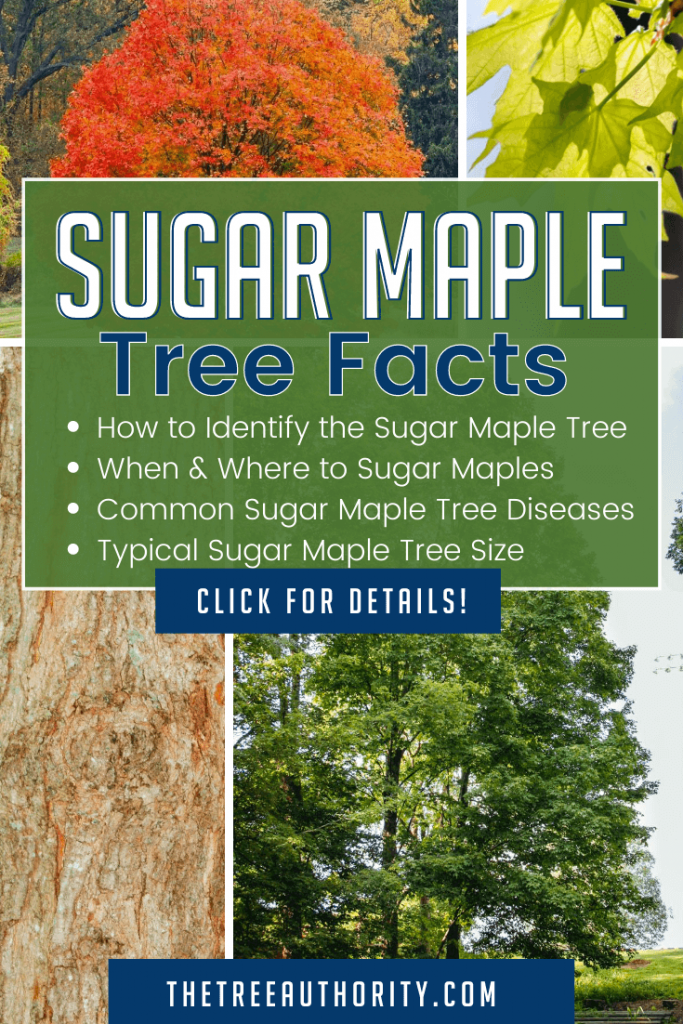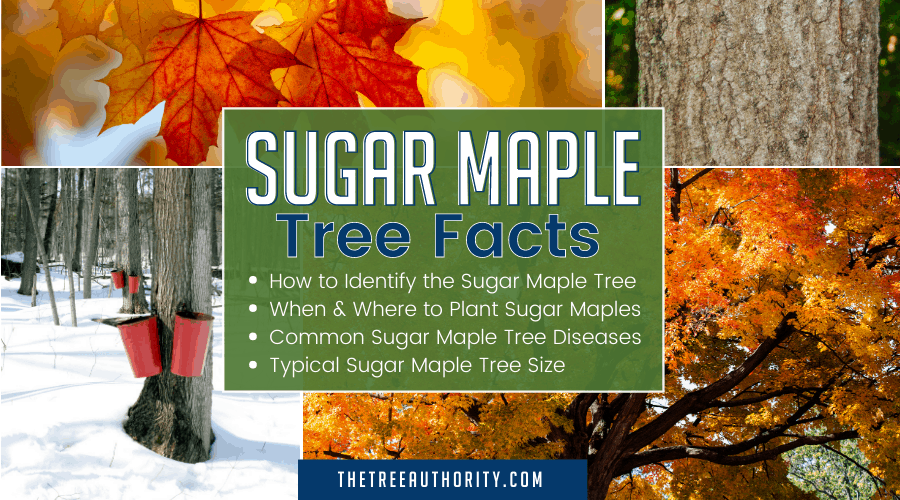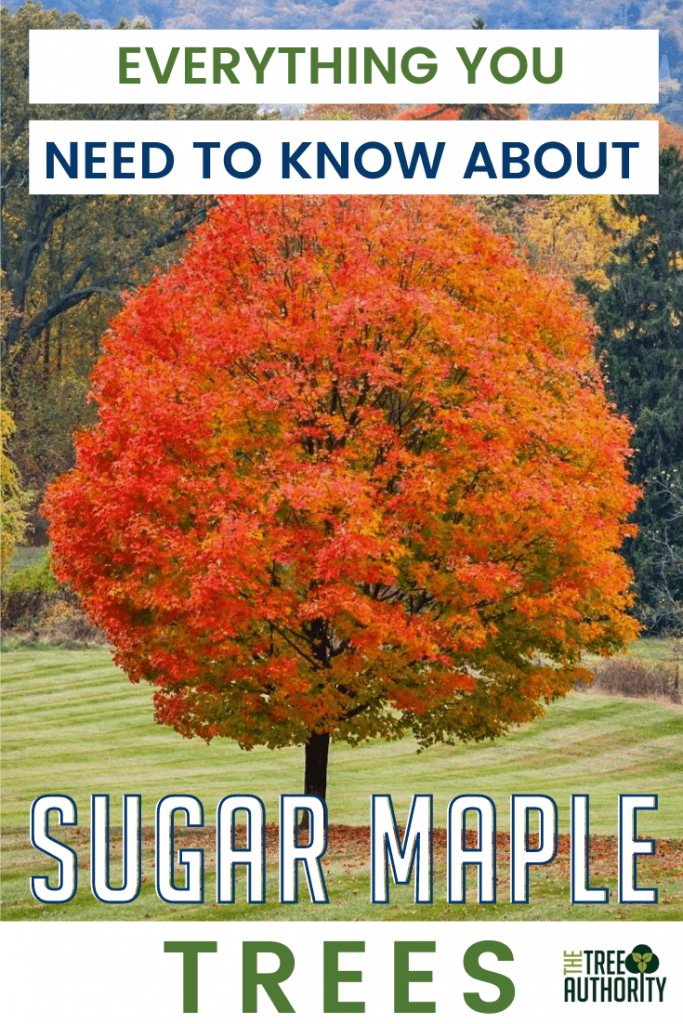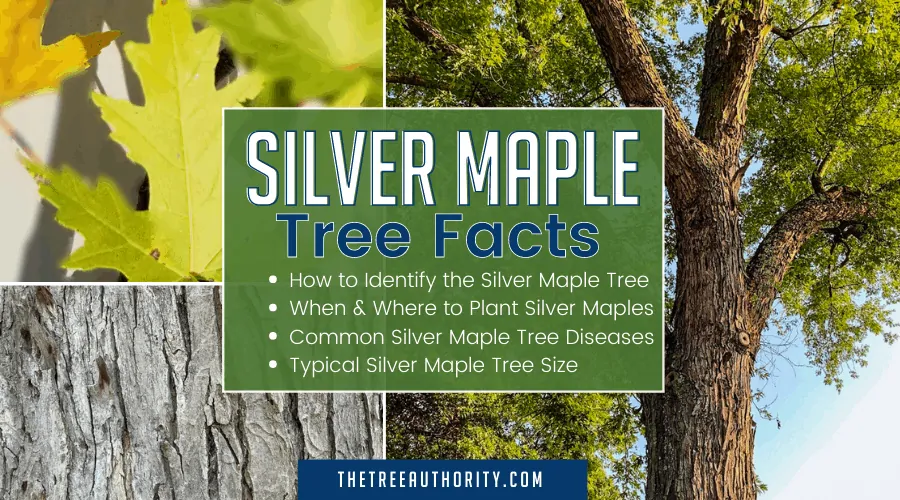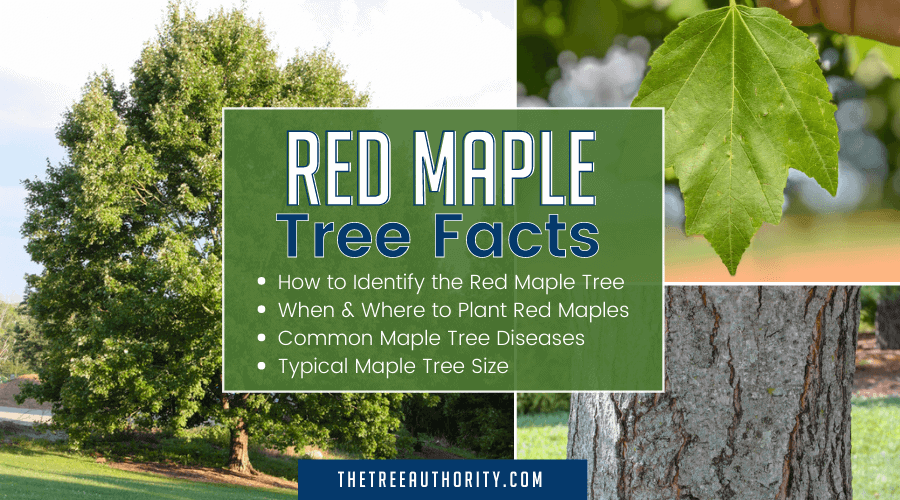The Sugar Maple tree is one of the most beautiful trees of the Midwest both in color and in form. The fall foliage is glorious with its fluorescent yellow/orange amber hues.
The Sugar Maple is well known for its ability to produce maple syrup. It’s sap contains 2-4% syrup making it a popular choice for maple syrup production.
Let’s dive into all the Sugar Maple Facts!
- Let’s dive into all the Sugar Maple Facts!
- Sugar Maple Scientific Name
- Sugar Maple Size
- How to identify Sugar Maple trees
- Sugar Maple Buds
- Sugar Maple Bark
- Sugar Maple Leaf
- Sugar Maple fall color
- Where do Sugar Maple trees grow?
- Planting a Sugar Maple tree
- Sugar Maple growth rate
- Sugar Maple root system?
- Sugar Maple Disease
- Conclusion:
Sugar Maple Scientific Name
The Sugar Maple scientific name is Acer saccharum.
Sugar Maple Size
Sugar Maple trees typically grow 65-70 feet tall and 40-50 feet wide. Their shape is typically oval and sometimes almost round.
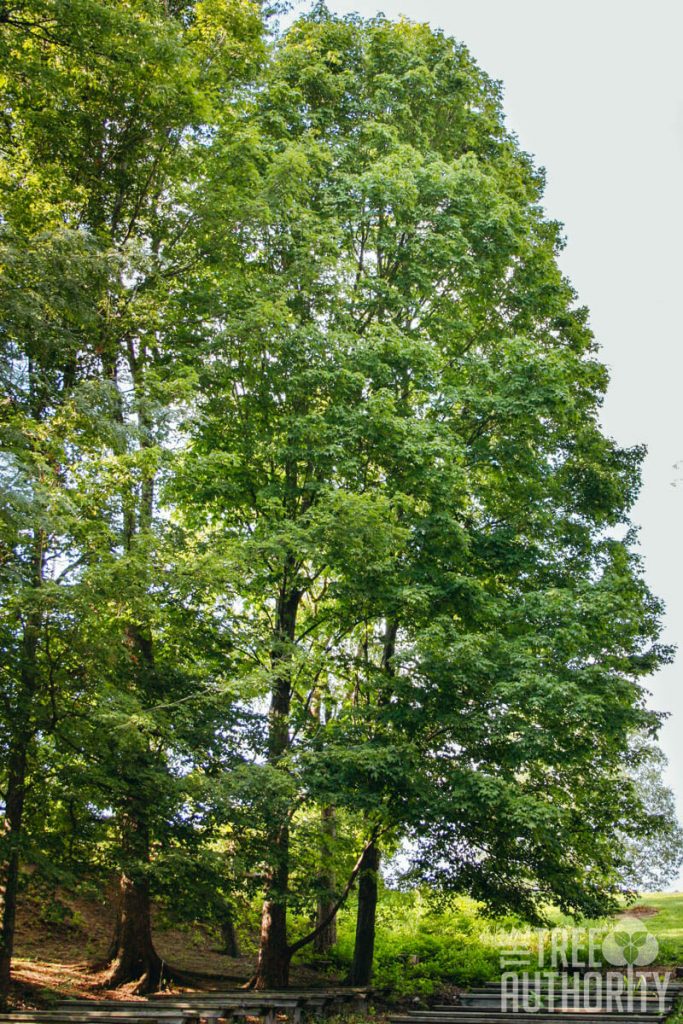
How to identify Sugar Maple trees
There are main identifying characteristics of trees that help you identify them. For Sugar Maple identification the first thing you want to look for is opposite branching.
Opposite branching is where two buds or stems originate at the same point or node.
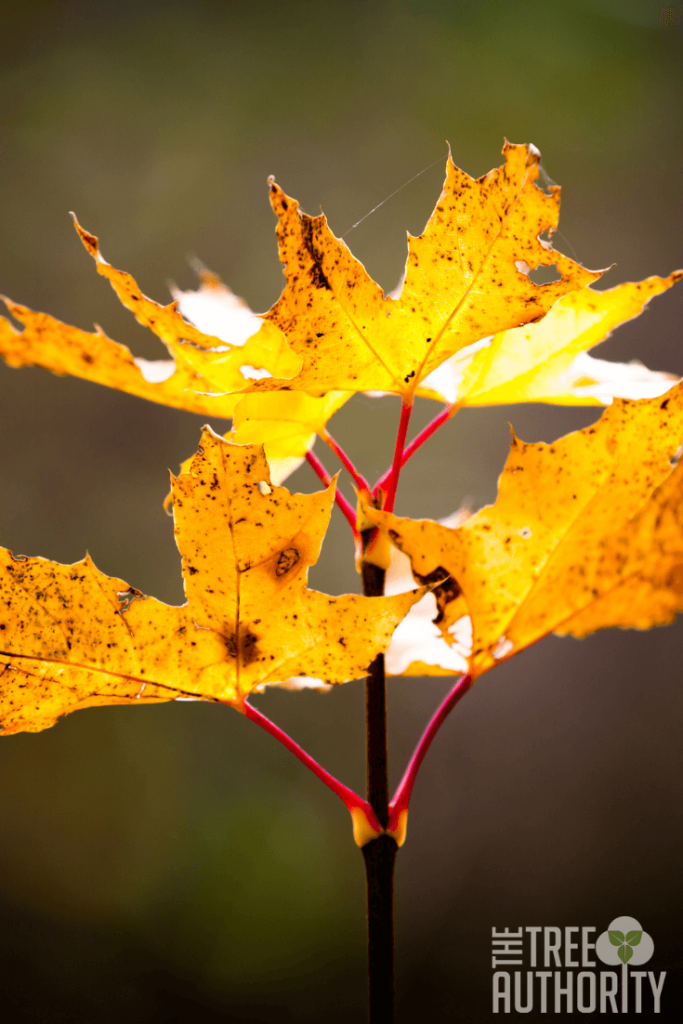
There is a saying MAD BUCKING HORSE, which narrows down the main native trees that have opposite branching.
Maples
Ashes
Dogwoods
Buckeye
Horse Chestnut
Sugar Maple Buds
Identifying Sugar Maple trees by the buds can be accomplished when there are no leaves on the trees, usually 6 months out of the year.
The buds of the Sugar Maple tree are a dark chocolatey brown color. They are around 3/16 to ¼ inch in length.
Sugar Maple trees have flower buds and leaf buds. The flower buds emerge first as the tree becomes aglow with yellow/green flowers.
Later the leaves will emerge and the seeds will mature.
Sugar Maple Bark
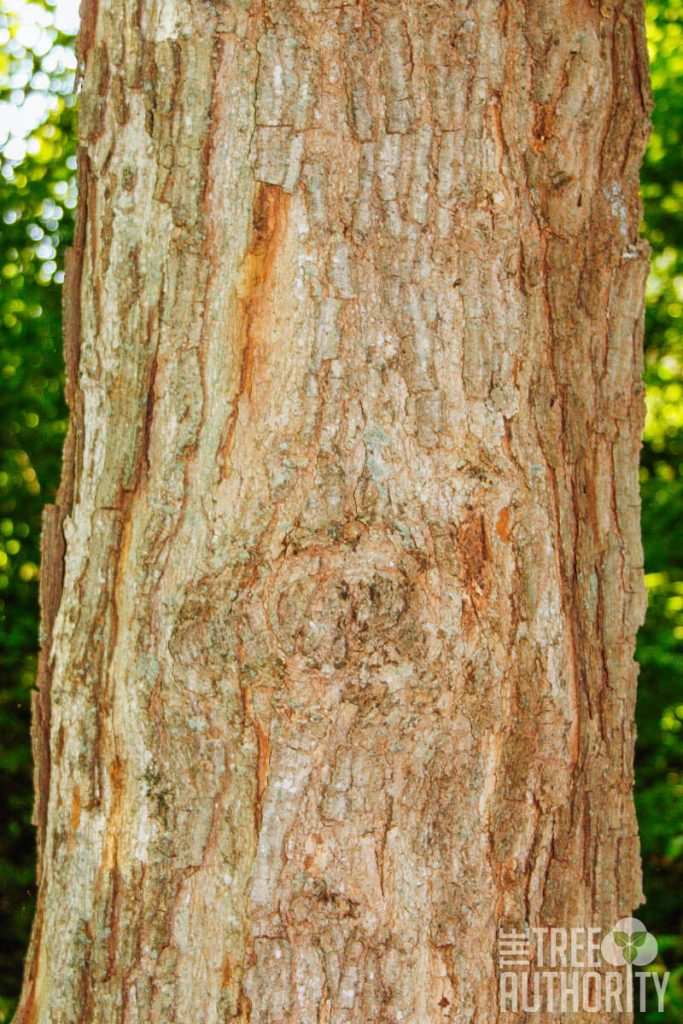
The bark of Sugar Maple trees changes as it ages. Young trees are quite different from older trees.
Sugar Maple tree bark in young trees is gray/brown in color and typically somewhat smooth.
The bark of older Sugar Maple trees become scaly with age and can be darker.
Note: Quite often the yellow bellied sapsucker bird is attracted to the Sugar Maple tree. It creates rows of holes in the bark. These holes seep with sap producing a sooty mold turning the bark black.
Sugar Maple Leaf
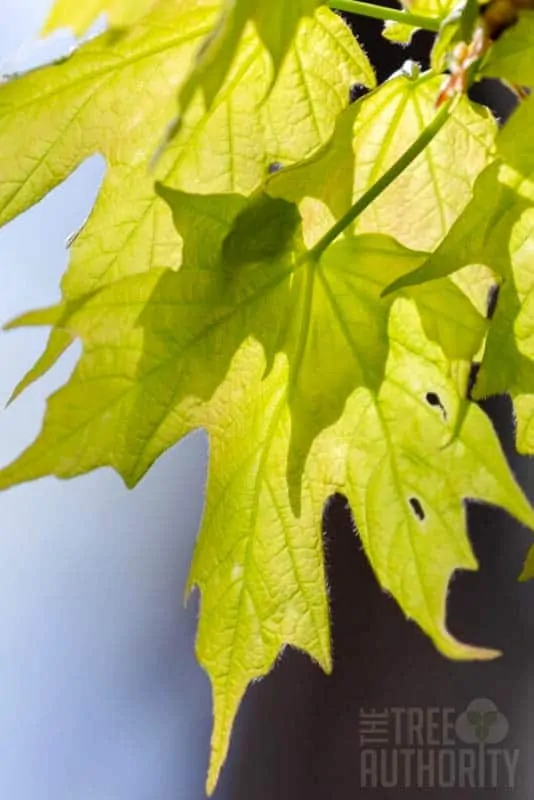
The Sugar Maple leaf is easily identified as the leaf on the Canadian flag.
Sugar Maple fall color
Sugar Maple trees in full fall color are nothing short of spectacular.
Sugar Maple fall colors can be a vibrant yellow, orange or red.
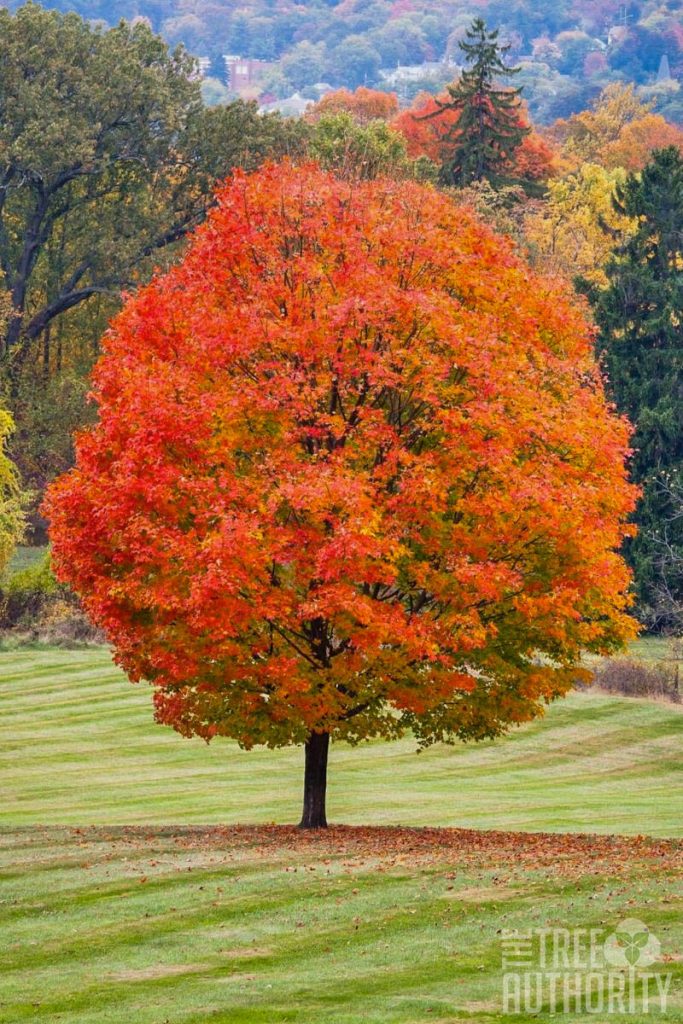
Where do Sugar Maple trees grow?
Sugar Maple trees grow best in moist, fertile soil, however, they are somewhat tolerant of higher pH levels. (Many trees love somewhat acidic soils.)
This is important because in the Midwest, there are a lot of higher pH, limestone soils.
Will a Sugar Maple Grow in Shade?
Sugar Maple trees are shade tolerant, so they can survive when planted in shade.
They also create so much shade beneath the tree making it difficult to maintain a healthy lawn/grass below them.
Can Sugar Maple Grow in Full Sun?
Sugar Maple trees can grow in full sun.
You do have to be careful not to over prune because the tops of the branches can get sun scalded. (source)
Planting a Sugar Maple tree
Typically Sugar Maple trees should be planted in the spring or fall.
I would recommend using balled and burlap trees or planting stock.
A balled tree would contain a large ball of dirt at the base. The ball should be 10 inches in diameter for every inch of caliper.
Do not plant your Sugar Maple tree too deep. There is a saying in the tree industry, “Plant them low, they’ll not grow. Plant them high, they’ll not die…”
Sugar Maple growth rate
How fast does a Sugar Maple tree grow?
Sugar Maple trees have a medium to slow growth rate. Generally this would be about 6-12 inches per year but worth the wait.
Sugar Maple root system?
The Sugar Maple root system is generally a shallow root system and can be more sensitive to drought.
Sugar Maple Disease
Girdling roots can be a problem with Sugar Maple trees. This happens when the roots do not grow out into the soil, but grow laterally and eventually strangle part of the tree.
Conclusion:
So in conclusion, the Sugar Maple tree is an excellent choice to enhance and beautify your landscape.
You may also be interested in:
Be sure to pin this post for later:
